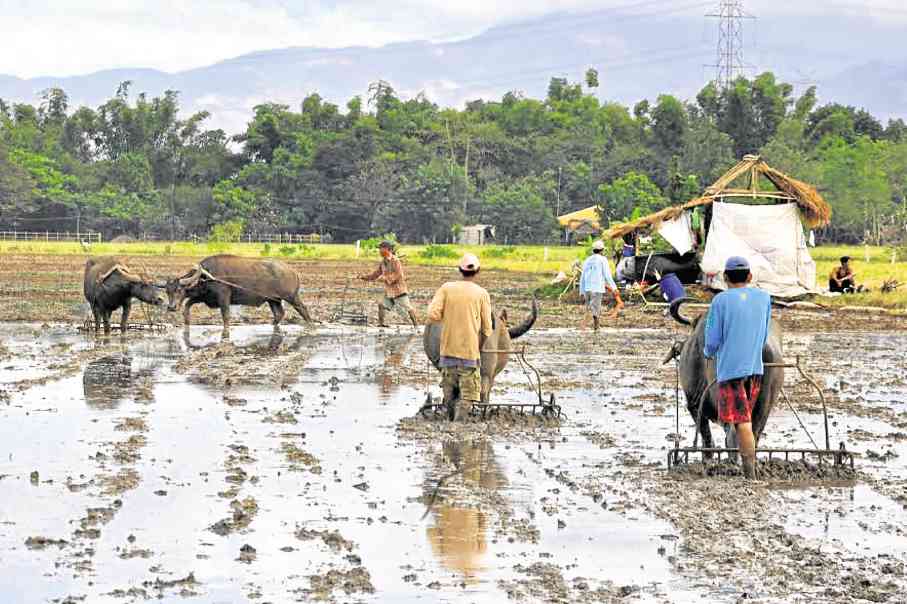Fewer carabaos left in Pangasinan as slaughter for food continues

Farmers in Umingan town in Pangasinan still rely on carabaos in preparing their rice farms for planting. —WILLIE LOMIBAO
STA. BARBARA, PANGASINAN—Because of indiscriminate slaughter for meat and meat products, the carabao population in Pangasinan province has been dwindling, according to a Philippine Carabao Center (PCC) official.
Carabao meat is processed into “tapa” (dried meat), the primary product of Mangaldan town, and “pigar-pigar” (deep fried carabeef) sold in food stalls in most central Pangasinan towns and cities.
“It hurts because even those that have been cross-bred with foreign-bred buffaloes are slaughtered,” said Gloria de la Cruz, PCC chief in La Union province.
According to the Philippine Statistics Authority, the number of slaughtered carabaos in the province increased from 10,705 in 2011 to 15,395 in 2016, while the carabao population for the same period dropped from 83,659 to 78,547.
De la Cruz, in a recent meeting with Pangasinan meat processors, encouraged them to grow their own carabaos for butchering instead of buying from farmers.
“They can pool their resources and raise their own carabaos. If some of these will produce offspring later, then they will also have a source of milk and an additional source of income,” she said.
To improve the carabao population, the PCC began cross-breeding carabaos in the province with foreign-bred Murrah buffaloes through artificial and natural insemination.
The effort yielded improved breeds but most of these ended up later in slaughterhouses, De la Cruz said.
Each time she visited a farmer who was given a carabao to raise, she said she would learn that the animal’s offspring had been sold. “The farmer would always tell me, ‘Ma’am, I needed money because a family member got sick,’” she said.
The indiscriminate slaughter of carabaos in the province has been taking place despite a provincial ordinance regulating the sale or slaughter of female carabaos, according to De la Cruz.
The ordinance has also established a buy-back plan, allowing the provincial government to get breedable female carabaos to be distributed as additional stock to dairy cooperatives in the province.














